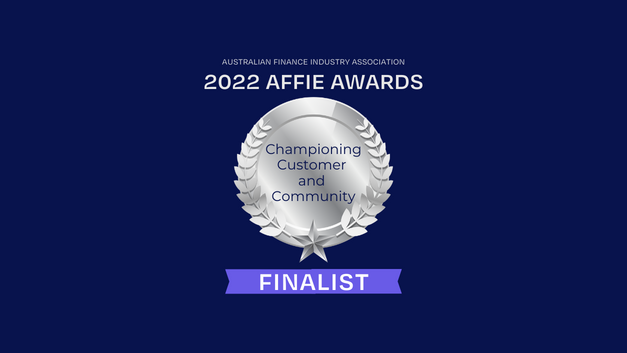As BNPL continues transforming payments, it’s also attracting attention from regulators and others. What does this mean for education businesses that want to use it?
With 20 years’ experience in vocational education and training, Marcus Sellen knew there had to be a payment option for students unable to access government funding or to pay fees with personal savings, that was better for them and for education businesses.
Now, as Hader Institute of Education CEO, Marcus says buy now pay later (BNPL) is essential to his education business and the first preference for most of its students. Despite this, he says many RTOs and non-accredited education businesses aren’t fully aware of BNPL’s potential.
At the same time, the BNPL trend has been attracting increasing attention from consumer groups and policy makers. What does all this mean for education businesses wanting to offer students the payment option they are increasingly preferring?
The BNPL landscape
BNPL has grown rapidly over the last five years driven by payment digitisation and debt aversion. What began as a way for young people to snap up the latest retail or fashion item has become a fixture in payment options across many industries.
The Reserve Bank of Australia estimated that BNPL transactions grew by about 55% in FY20 and tripled in FY21.[1] Worldpay has predicted they will grow a further 32% annually to comprise 17% of the global commerce market by 2023, by which time BNPL will be used by five Australians.[2]
However, there are also changes on the horizon. In late 2021, the Reserve Bank of Australia (RBA) signalled upcoming regulatory changes that will mean BNPL providers can no longer stop retailers from passing the costs of payments onto customers.[3] Consumer groups, such as Choice, are calling for greater regulation and questioning the use of BNPL in promoting consumerism.[4]
Using BNPL for education doesn’t fall into that trap. It’s not about buying the latest fashion item, it’s about enabling people to invest in their own education and training.
In today’s changing job market, with increasing globalisation and a shifting skills focus, the ability to reskill and upskill has never been more important. Too often though, finance is a barrier to this for both students and education businesses. BNPL is not always a silver bullet solution, but it is worth understanding what it offers education businesses and how a BNPL provider manages any risks it presents.
Australians aged 14-34 make up almost 60% of BNPL users, with those aged 25-34 comprising 33.5%.
Roy Morgan research[5]
An education provider’s experience
When CEO Marcus Sellen was establishing Hader Institute – an RTO that specialises in online education and training in mental health, alcohol and other drugs and counselling courses – he knew BNPL was essential to the business.
“We needed to find a way that students could access our courses since they’re not eligible for government funding,” Marcus said.
“Typically, RTOs put these students on an internally managed instalment plan, which you have to invoice for every month and have a whole finance system in place for. With BNPL, it’s so much simpler and better for everyone. It removes the admin and collection burden from us and it’s an attractive option for students who can pay their course off in a way that suits them.”
For Hader Institute, BNPL is the preferred option for most students, which is not surprising given the other options for financing non-government funded courses. Traditionally, the main one has been to apply for an edu loan from a non-bank financial institution, usually with high interest rates. The same goes for international students who are looking for fee help for part-time study or fee help for permanent residents where government support is not available.
There are many students in this situation, with three million full fee-paying vocational students ineligible for government support in 2019 and numbers continuing to rise.[6]
“The BNPL model is critical to our business. It’s our preference and we offer it to all our students.”
Hader Institute CEO, Marcus Sellen
How to tell one BNPL provider from another
There are now more than a dozen companies providing BNPL for everything from make up and shoes to TVs and solar power.
But there’s only one that focuses exclusively on education – ZeeFi. Our Study Now Pay Later (SNPL) product is available for courses valued between $500 and $20,000. Crucially, it enables education businesses to receive the full course fee upfront while students pay regular interest-free payments for up to 36 months. This means increased cashflow for education businesses and stress-free funding for students, which in turn drives enrolments.
ZeeFi specialises in education finance and with our background in student loans and payment plans, we understand the sector’s nuances including payment compliance and student characteristics. Once a student is approved for SNPL, we handle everything from onboarding to payment collection, removing the admin burden from education businesses.
Importantly, we take credit and compliance checks seriously to meet responsible lending criteria, which means we don’t approve everyone for SNPL. And that’s okay because, unlike other BNPL providers, we have a solution for students who don’t meet the criteria or whose situation changes. In this case, we set them up with an interest-free instalment plan, which we manage on behalf of the education business – again, removing admin and enabling enrolment.
“You’re the right people for us. You’re relevant to our audience; the right people and the right focus on education with a customer service facing team. We value that.”
Hader Institute CEO, Marcus Sellen
If you would like to discuss Study Now Pay Later (SNPL) or other education finance solutions to enable enrolments, please reach out any time.
. . . . . . . . . . . . . . . . . . . . . . . . . . . . . . . . . . . . . . . . . . . . . . . . . . . .
[1] https://www.rba.gov.au/publications/bulletin/2021/mar/developments-in-the-buy-now-pay-later-market.html
[2] https://www.savings.com.au/buy-now-pay-later/buy-now-pay-later-to-double-market-share-by-2023
[3] https://www.smartcompany.com.au/startupsmart/startupsmart-technology/rba-bnpl-no-surcharge-rule-smes/
[4] https://www.choice.com.au/money/credit-cards-and-loans/personal-loans/articles/does-buy-now-pay-later-need-tighter-regulation
[5] https://www.savings.com.au/buy-now-pay-later/why-buy-now-pay-later-is-so-popular-with-millennials
[6] https://australianfintech.com.au/australian-fintech-zeefi-launches-to-disrupt-the-education-sector/



